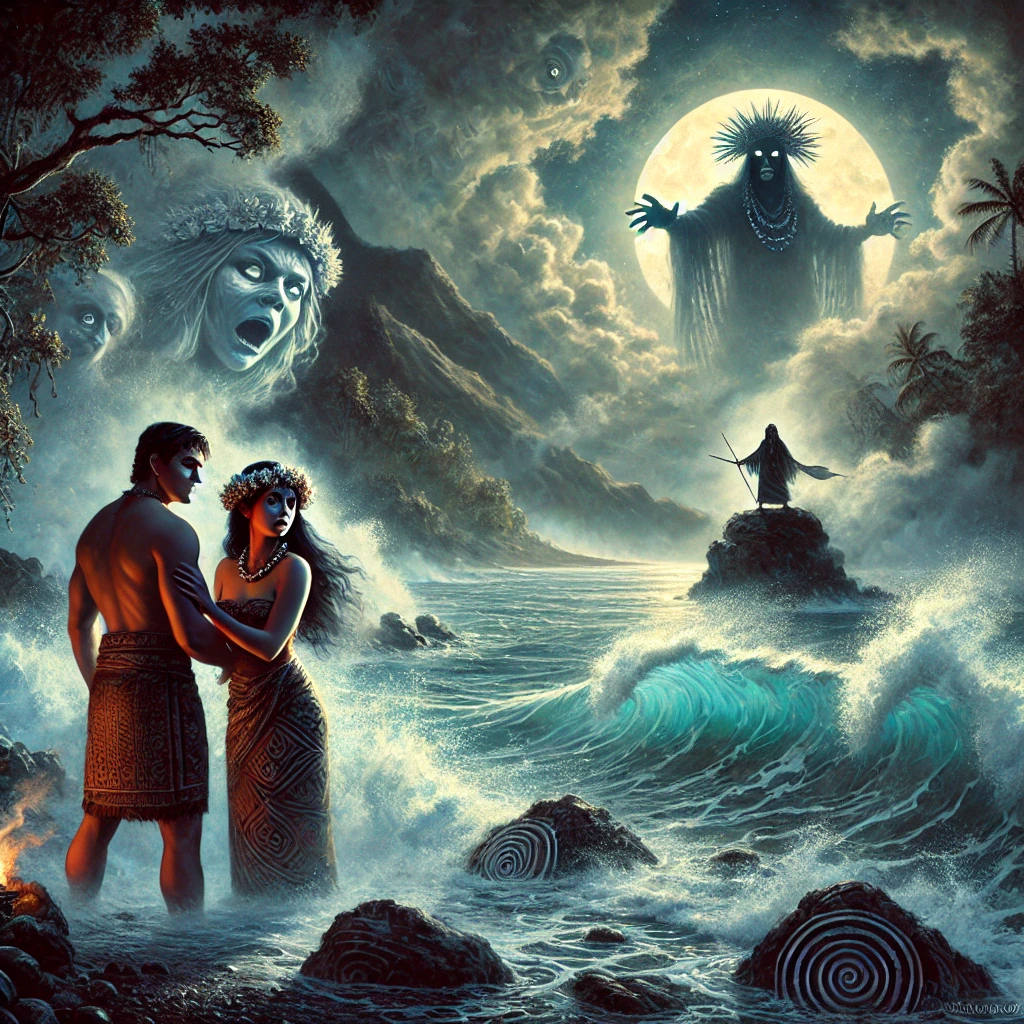In ancient Hawaiian and Polynesian cultures, curses were woven deeply into the spiritual fabric of daily life, rooted in the belief that mana, a life force connecting all beings and the natural world, was to be respected and safeguarded. This belief created a system of strict taboos, known as kapu in Hawaiian culture, meant to maintain cosmic harmony and protect the flow of mana. Breaking these sacred rules was thought to unleash the wrath of spirits, which could be as gentle as a warning or as severe as a soul-crushing curse.
One of the most feared curses in ancient Hawaii was the ana’ana, a powerful form of sorcery believed to drain a person’s life force and leave them sick, weak, or even dead. The kahuna ana’ana, or sorcerer of curses, was said to possess the terrifying ability to manipulate mana and could pronounce death upon anyone they chose. Families who feared they were cursed often sought help from a kahuna of healing, who would perform elaborate ceremonies to restore balance and lift the curse, such as offerings of food, flowers, and sacred chants to appease the offended spirits.
One ancient story from the island of Tahiti tells of a young woman named Hina who fell in love with a forbidden suitor, a fisherman from a rival village. When her family discovered the affair, they imposed a kapu, barring her from seeing him. Desperate to be with her lover, Hina secretly swam across a perilous bay each night to meet him. Angered by her defiance, her family enlisted a powerful tahuna, or priest, who invoked a tapu curse over the bay. The waters became treacherous, swirling with hidden dangers. One stormy night, Hina braved the swim again, only to be pulled into a relentless current that wrapped around her, as if the spirits themselves had claimed her. In some versions of the story, her lover never stopped searching the shoreline, while others say he vanished into the depths after her, their souls intertwined forever in the ocean.
In Samoa, curses took on a different form known as fa’aaveavea, or the binding curse, a dark spell used by chiefs to control their subjects or punish rivals. In one chilling tale, a Samoan chief named Malietoa used this curse to stop a warrior from an enemy tribe, binding the warrior’s spirit so he could no longer wield his weapon. Despite his strength, the warrior found himself powerless, his limbs as heavy as stone, as if his very essence was held captive. Legends say that Malietoa’s binding curse was so powerful that the warrior remained in a trance for days, his spirit drifting in a strange dream until he finally succumbed. His people, fearing they too might be cursed, surrendered to Malietoa, submitting to his rule.
These ancient tales, passed down through generations, serve as reminders of the powers believed to reside in curses and the importance of respecting the sacred forces of nature. For many, they reinforce the idea that mana is not just a gift, but a responsibility, and to disrespect it is to risk facing the wrath of the spirits that protect it.
